IN-DEPTH
Two of the defining features of Springfield’s skyline, Hammons Tower and the John Q. Hammons Building, could return to local hands and undergo renovations under a project proposed by a development group, according to documents obtained by the Hauxeda under the Missouri Sunshine Law.
The records also entail proposals for the city’s acquisition of the Jordan Valley Car Park, the parking garage adjacent to Hammons Tower at 815 E. St. Louis St. All three structures are owned by Atrium Hospitality, a hotel and asset management company based in Alpharetta, Georgia.
Documents dated in 2023 detail potential funding sources for the city and an unspecified development group, plus outline the proposed renovations of the office buildings and envision the benefits of local ownership for downtown Springfield.
It is unclear the current status of the proposals, but records obtained by the Daily Citizen from the City of Springfield show:
- The development group interested in acquiring Hammons Tower and the Hammons Building appears to be led by Riley Shantz, a partner at DHTC Development and the son of Debbie Shantz Hart, who served as general counsel for John Q. Hammons Hotels and currently co-owns Housing Plus LLC, Sustainable Housing Solutions LLC and DHTC Development.
- The developer’s projected capital stack, or funding structure for the proposed acquisition and renovation, totals $22 million, including $9 million in equity, though the estimated price of the buildings isn’t clear.
- The purchase price of the parking garage has been estimated at up to $16 million, though city officials stressed the difficulty in putting a value on such a facility.
- The proposed transactions could be the linchpin to spur further development, including a potential “ballpark village/mixed-use” development around Hammons Field and a new convention center, and help “increase the probability of investment” into the University Plaza Hotel and Convention Center, which is also owned by Atrium.
In an interview May 7 with the Daily Citizen, Springfield Mayor Ken McClure indicated the city’s purchase of the parking garage does not appear likely, at least right now.

“I don’t even want to talk about whether that's something the city would do, we’re not to that point,” McClure told the Daily Citizen. “I do believe that the entire St. Louis (Street) corridor…needs to be further developed and needs to become, once again, probably the economic center of downtown Springfield, and it’s got the potential to do that.
“That’s going to include a lot of different aspects. How and when do those come to fruition? I don’t know. But I do believe that we've got to focus over the next months and years on developing that corridor.”
McClure and other sources interviewed for this story primarily spoke in broad terms, citing commitments to confidentiality.
History of Hammons Tower, Jordan Valley Car Park
Hammons Tower, located at 901 E. St. Louis St., and the John Q. Hammons Building, at 300 S. John Q. Hammons Parkway, were both developed by John Q. Hammons in the late 1980s.
At 270 feet tall and 22 stories high, totaling 197,397 square feet, Hammons Tower is the tallest building in Springfield. The Hammons Building has nine floors and 57,000 square feet.
According to city documents from May 2023, Hammons Tower was 49% occupied and the Hammons Building was 66% occupied. Hammons Tower’s tenants include Lowther Johnson Attorneys at Law, Strong Law, the U.S. Attorney’s Office and the Federal Defenders Office. The Hammons Building houses the Kutak Rock law firm and the Missouri Court of Appeals, Southern District.
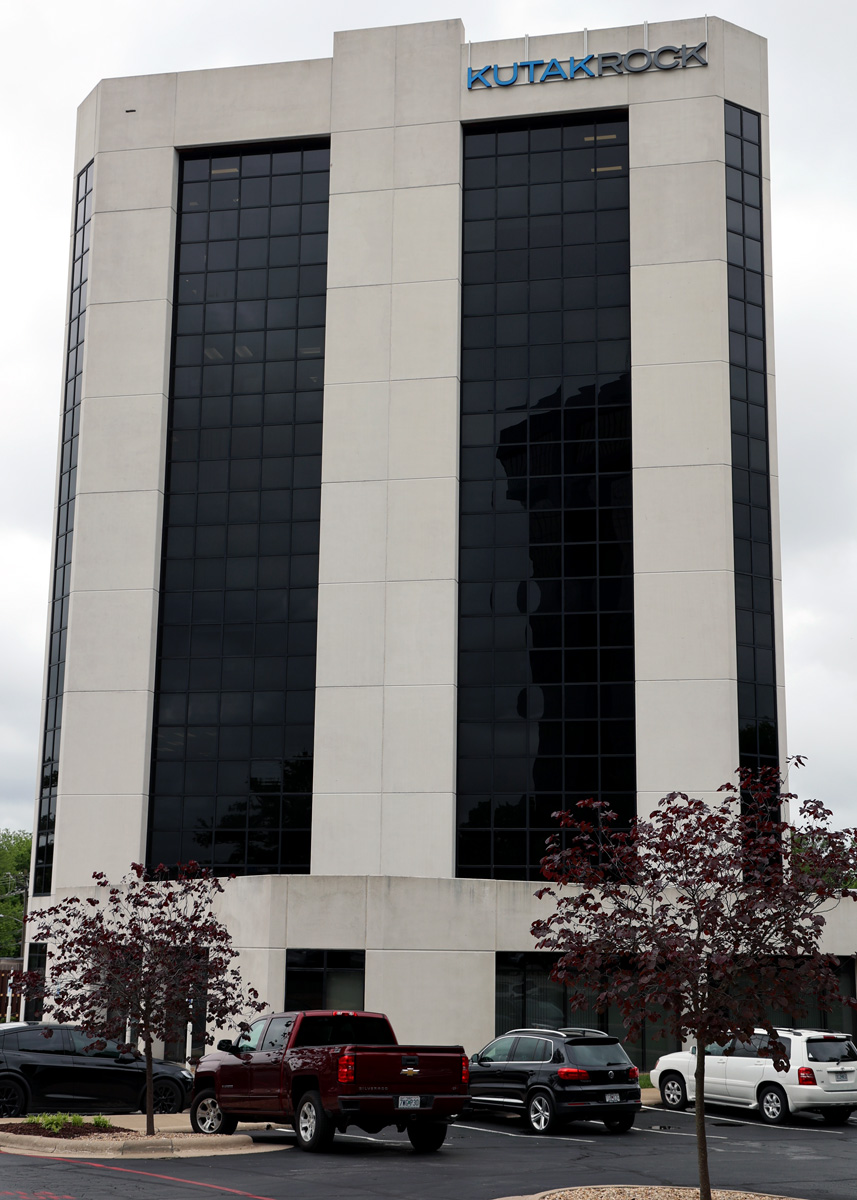
Hammons Tower is also home to the Tower Club, a former members-only restaurant that closed in 2017. The space, located on the top two floors of the building, remains available to rent for special events.

The Jordan Valley Car Park was constructed in the early 2000s at a cost of $12,709,504. Originally owned by the city, the parking garage was sold to Hammons in 2008 for $7 million, with an agreement that he would build an Embassy Suites on the 1.7-acre lot between the car park and Expo Center, though it never came to fruition.
The city later reacquired the lot, which remains vacant, while Hammons retained the parking garage.
The car park provides 977 parking spaces on six levels and 14,000 square feet of commercial space, currently occupied by the Springfield Convention and Visitors Bureau.
The three properties were included in the 2018 bankruptcy settlement between John Q. Hammons’ estate and the hotelier’s largest creditor, JD Holdings and Jonathan Eilian, owner of Atrium Hospitality.
Reinvestment could spur new development
The proposed acquisition and renovation of Hammons Tower and the Hammons Building by a local development group — which is not clearly identified in documents obtained through a Sunshine Law request by the Daily Citizen — and the city’s purchase of the car park are considered as potential catalysts for development and investment in downtown Springfield.
The Springfield Business Development Corporation, a subsidiary of the Springfield Area Chamber of Commerce, envisions that potential through a phased approach outlined in a project overview for an 84-acre area along the stretch of East St. Louis Street between National Avenue and Kimbrough Avenue.
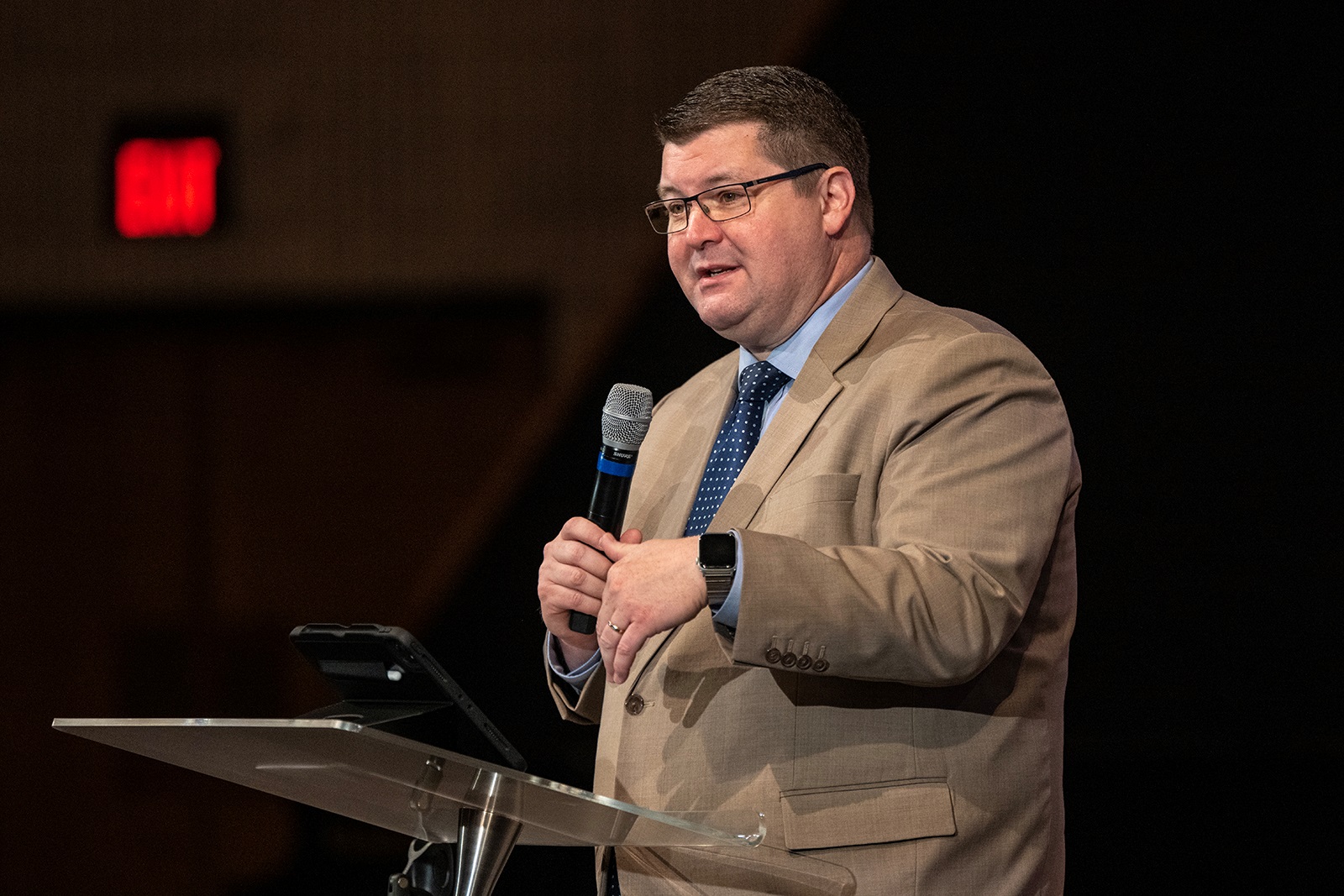
In an interview, Chamber of Commerce President Matt Morrow emphasized that the overview, provided to city officials in March 2023, was not a plan, but a “potential context for development in a particular corridor,” and meant to conceptualize “how a project could contribute to the acceleration of that kind of vision.”
Morrow added that the projects proposed in the overview were backed up by Forward SGF, the city’s comprehensive plan, and reflect “long-range goals for members of the City Council, probably, city staff and other partners in the area.”
Status quo painted as bleak picture with ‘iconic spaces' deteriorating
The first project of the white sheet focuses on the proposed acquisition of the three structures, envisioning three potential outcomes for the corridor.
Under a scenario in which the city does not purchase the car park, the overview implies that Atrium might retain all three properties, “iconic spaces in downtown continue to deteriorate” and adjacent employers could leave the area.
The city’s immediate acquisition of the parking garage, it suggests, could spur the purchase of Hammons Tower and the Hammons Building by a local development group, attract businesses, open up Hammons Field’s surface lots for development and help “increase the probability of investment” into the University Plaza Hotel and Convention Center.
Lastly, a third scenario in which the city buys the parking garage at a later date, warns of uncertainties surrounding the cost, funding availability, the acquisition of the other properties and the potential for their continued deterioration.
Morrow noted that there were variables to each scenario that aren’t represented, but the goal was to provide context for a range of options for the Springfield City Council to consider.
“It’s just really a matter of timing, what makes sense,” Morrow said. “Certainly cost is going to be a factor, no matter what happens.”
‘Ballpark Village' envisioned in area south of Hammons Field

The document details other potential projects that could be “expedited” with the city’s acquisition of the car park, including a “ballpark village/mixed-use” development around Hammons Field, citing “ample interest” from developers in the Atrium-owned Q Hotel & Suites, located at 1117 E. St. Louis St., which closed during the COVID-19 pandemic.
Morrow emphasized that any potential development on Hammons Field's surface lots would require a workable solution for parking for Cardinals fans, but called the property a “potentially tremendous opportunity for our community.”
“It’s really incumbent on all of us to try to do what we can to identify what the highest and best use of it is today, and what it will be in the future,” Morrow said.
McClure said that the parking lots serve an “immediate need,” citing the popularity among Cardinals fans of the city’s ownership of the surface lots, which it bought along with Hammons Field in March 2023.
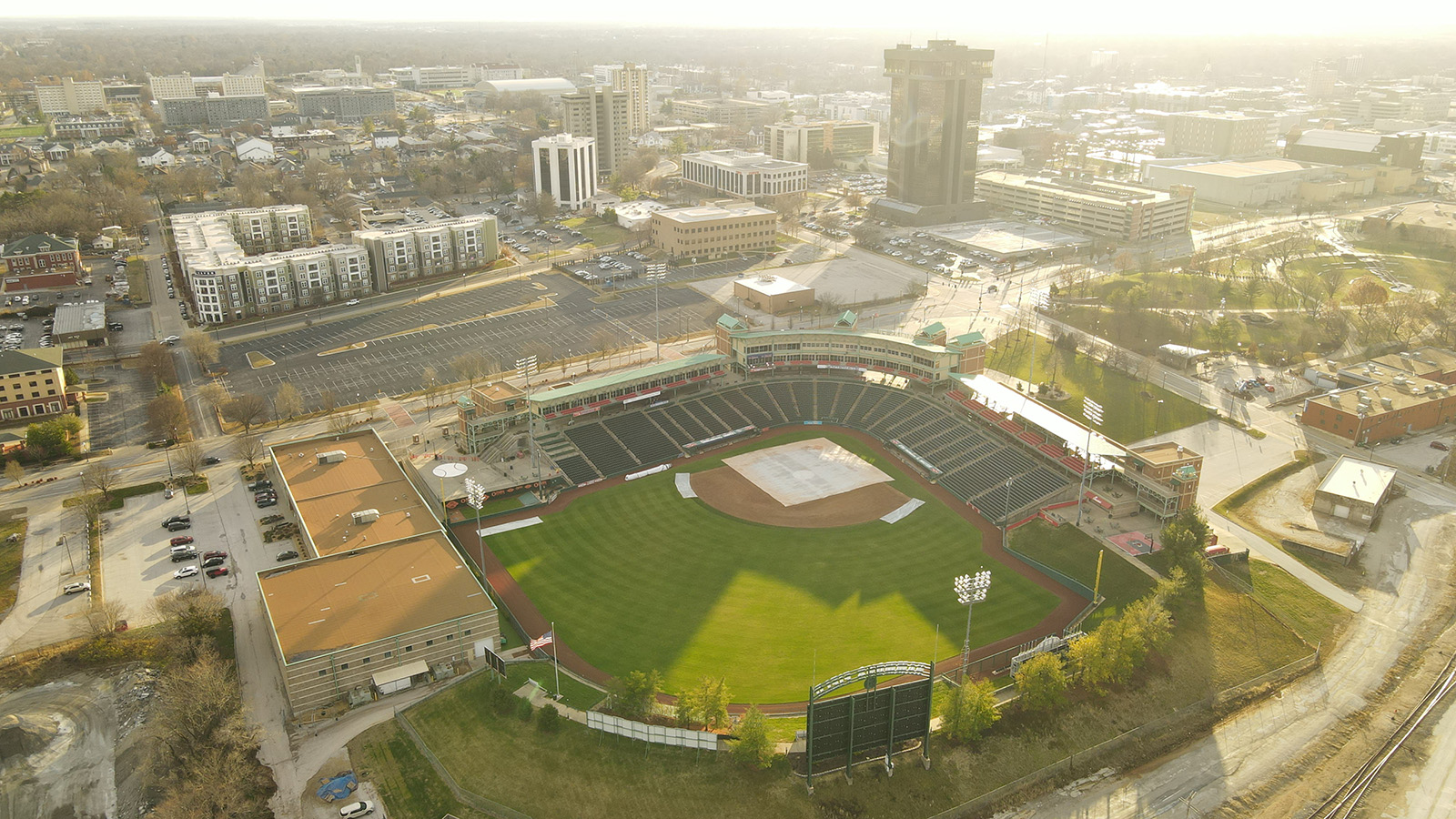
City Manager Jason Gage agreed, and added that the city would first determine if the parking lots could be used for a municipal purpose before considering any private development on the property.
In addition, the project overview envisions the potential development of a new downtown convention center and outlines three possibilities for University Plaza, including investment of $17 million to $22 million to attain different levels of Marriott Hotel chain status or a “do nothing” scenario. Atrium projects each option will result in the same financial outcome over 20 years, according to the overview.
Morrow noted the scenarios laid out in the white sheet were based on previous projects, and did not imply the plans of any property owner or developer.
A spokesperson for Atrium Hospitality did not respond to interview requests by deadline for this story.
Developer seeks tax abatement through state bond program
The proposed acquisition of the three structures, and renovation of the office buildings, could be financed through a myriad of funding sources, including bonds, grants and property tax abatement.
According to the documents obtained by the Daily Citizen, the developer’s projected funding structure for acquisition and rehab costs includes $9 million in equity and $13 million in total debt. In addition, the project could also be supported through a bond program authorized through Chapter 100 of the Missouri statutes.
A deal sheet provided to city officials in April 2023 from Riley Shantz requests the city government use the bond program in a manner similar to property tax abatement authorized under a different state law.

Under Chapter 100, construction materials, certain tangible personal property and the facility may be purchased tax exempt by the local government and leased back to the developer. The developers’ bid for Chapter 100 bonds includes a request that the program mirror Chapter 353. Chapter 353, also known as the Urban Redevelopment Corporations Law, provides property tax abatement for up to 25 years for property the city deems blighted.
“The proposed project currently has a significant tax burden and freezing the taxes at the current level will not provide the relief and sufficient cash flow for the ongoing reinvestment,” the document reads. “By mirroring a Chapter 353 abatement, the initial investment can be made into the assets while the ongoing tax savings can be reinvested into the building over time.”
City documents indicate the potential for additional funding sources, including historic tax credits, Commercial Property Assessed Clean Energy financing and Opportunity Zone investment.
Riley Shantz and Debbie Shantz Hart did not respond to interview requests for this story. Other potential investors were not clearly identified in the documents obtained by the Daily Citizen.
Funding considered for the car park
Though the price of the parking garage isn’t clear, cost estimates and the appraised value offer a glimpse at its potential going rate.
The Springfield Business Development Corporation estimates the car park could sell for $16 million, though McClure, who said he “spent a lot of time working on parking garages” during his tenure at Missouri State University, emphasized that setting a price on a parking garage was more convoluted than that.
“When you look at any parking facility, certainly of that magnitude, how much revenue is it going to bring in, how much is it going to cost you? Those are hard,” McClure said. “How you address that, and whether it's worth addressing that are two different questions.”
The car park is valued at $3,840,000 to $5,980,000, based on future revenue estimates, according to an appraisal conducted by Southwest Valuation for the city’s potential acquisition of the facility.

Gage, the Springfield city manager, emphasized that it is not uncommon for the city government to “get an appraisal on a piece of property from a speculative perspective,” but noted that income-based appraisals were only one way to measure the value of the parking garage, and that the appraised estimates aren’t necessarily equal to its future value.
A variety of revenue sources for the parking garage are proposed by the city and the Springfield Business Development Corporation, including the ¼-cent Capital Improvement Sales Tax, the $1.25 million in annual debt service to the College Station and Heers parking garage — which expires in 2028 — and funding from the Missouri Development Finance Board.
Mark Stombaugh, executive director of the Missouri Development Finance Board, said he has had general discussions with a developer about the parking garage and other opportunities for downtown investment, but it has not “progressed to a point of any application or project parameters that could be evaluated for any determination of the Board’s potential participation.”
Private ownership of parking garage preferred
Though McClure disclosed little about the City Council’s consideration of the proposed acquisition of the car park, he shared his perspective.
“We are a long ways from anything involving that,” McClure said. “And it goes back to the larger picture of the entire corridor. I can only speak for myself, but I don't think at this point, it makes sense for us to buy that parking garage. That may change later at some moment. Clearly, that's going to be part of the development down there. My position is ‘not at this time.’”
Gage said private ownership of the parking garage is ideal, though it can be dependent on the scale of any potential development.
“Today, it isn’t fully utilized,” he said. “The real question is, ‘how is it going to be utilized tomorrow?’”
In addition to the Springfield Convention and Visitors Bureau offices, FORVIS, whose offices are located across the street at 910 E. St. Louis St., has a lease agreement for 475 parking spaces in the car park.
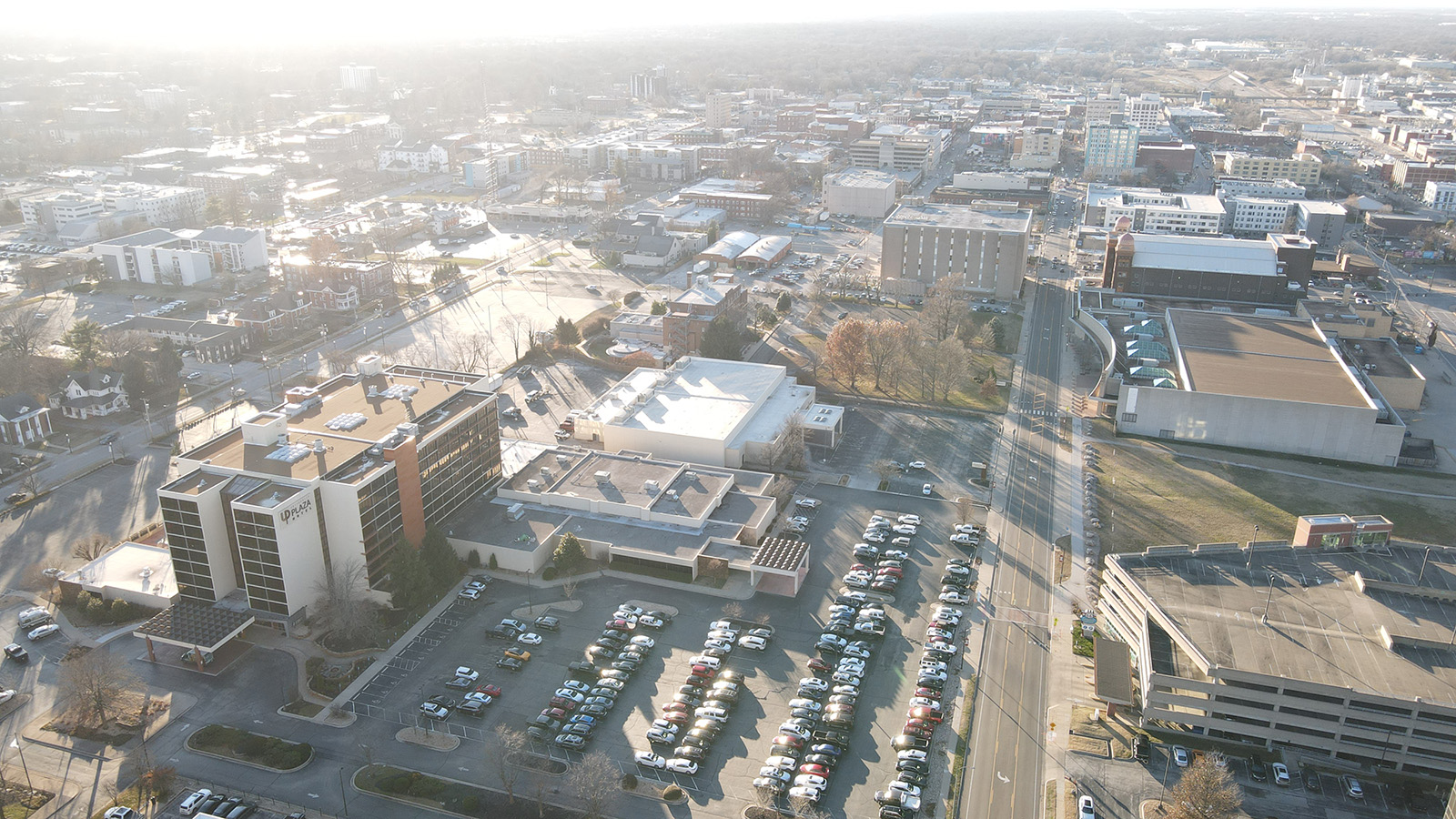
McClure added that discussions were much broader in nature, and emphasized that University Plaza will play a major role in the future of the St. Louis Street corridor.
Gage said that the best thing for the corridor would be for Hammons Tower to be fully occupied, and highlighted the need for a convention center and the vital role of the Springfield Cardinals.
“There are a lot of pieces potentially,” Gage said. “We can't predict what opportunities will be in front of us at what time. We can only hope that people realize that we do believe that corridor is important, we think the future of that corridor is important…and hope that some of those pieces and opportunities for those pieces can come about. And then it's about really just sitting down and trying to figure out what does that mean for us as a city, what does it mean for that area and our community.”
Plans for Hammons Tower, Hammons Building
In addition to renovating the buildings’ office space, the developers envision revitalizing Hammons Tower with a gym, restaurant, bar and coffee shop and the Hammons Building with a “new modern lobby” within the first three years to help attract tenants.
Following initial investments, additional renovations and improvements will be market dependent, according to city documents, with ongoing annual investment needed over the next 10-15 years to create Class A office space. The developer has also explored the possibility of converting existing office space to condominiums as a “backup plan” if there is no office demand.
In the Chapter 100 bond request, the developers proposed a base investment of $6,908,265 into Hammons Tower and $2,850,000 into the Hammons Building.
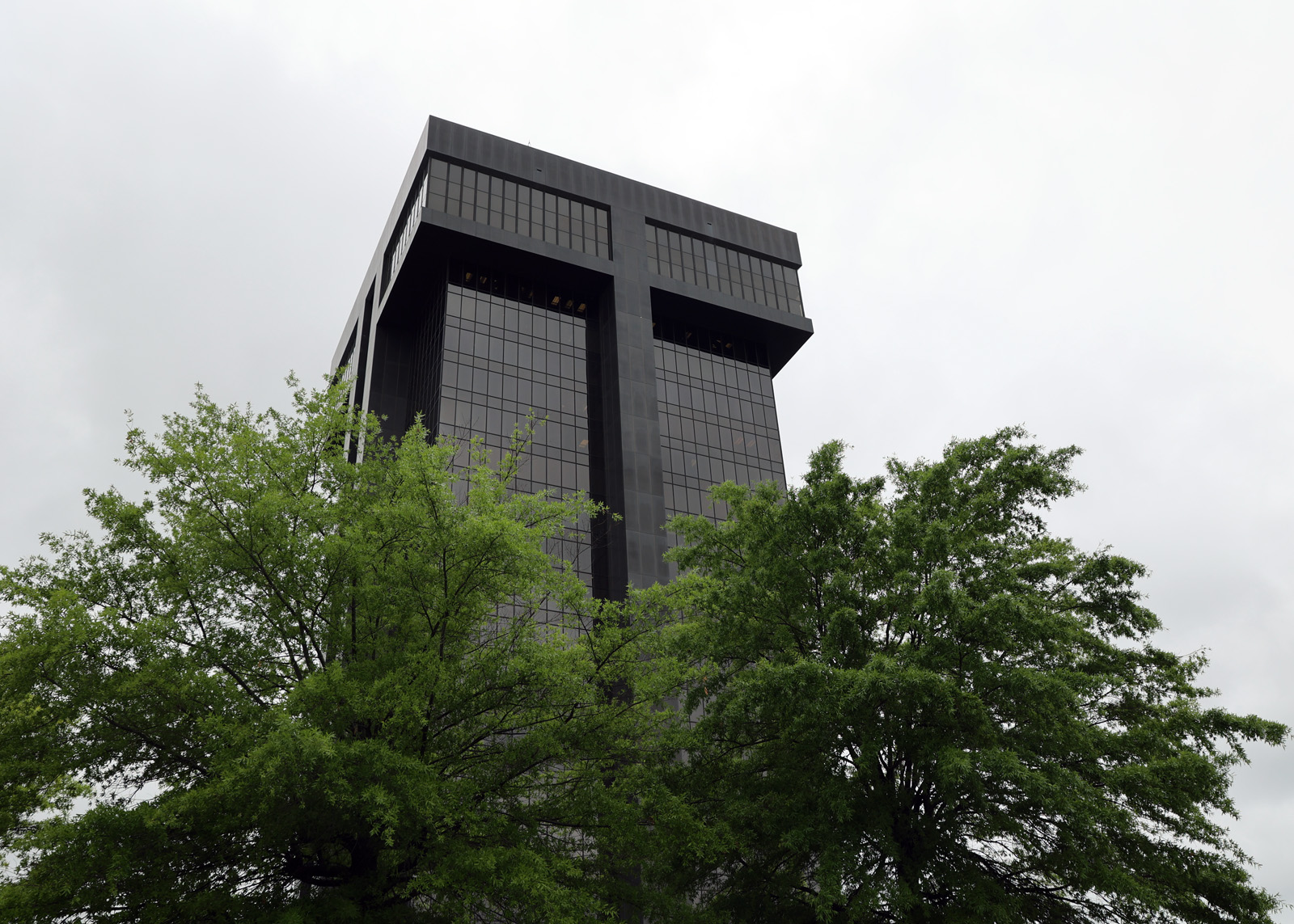
“In many ways, the revitalization of these assets is as necessary as their initial construction 40 years ago,” the document reads. “Without investment in these office assets, both its quality and occupancy will continue to decrease, creating a significant issue for Springfield’s downtown.”
Morrow praised remodeling that has occurred in Hammons Tower, adding that despite changes in demand since the building was constructed and the COVID-19 pandemic, there is a continued interest for office real estate in Springfield.
“What has shifted — and this was already taking place over five years ago — is the type of office space that people are looking for and interested in paying for,” Morrow said. “It's more kind of a modern, Class A of a certain size floor plan that is just a little bit newer in style and function.”
Records indicate the developer was working to secure commitments from potential tenants, and was hoping to have a signed purchase agreement in May 2023, and close on the properties by mid-June.

